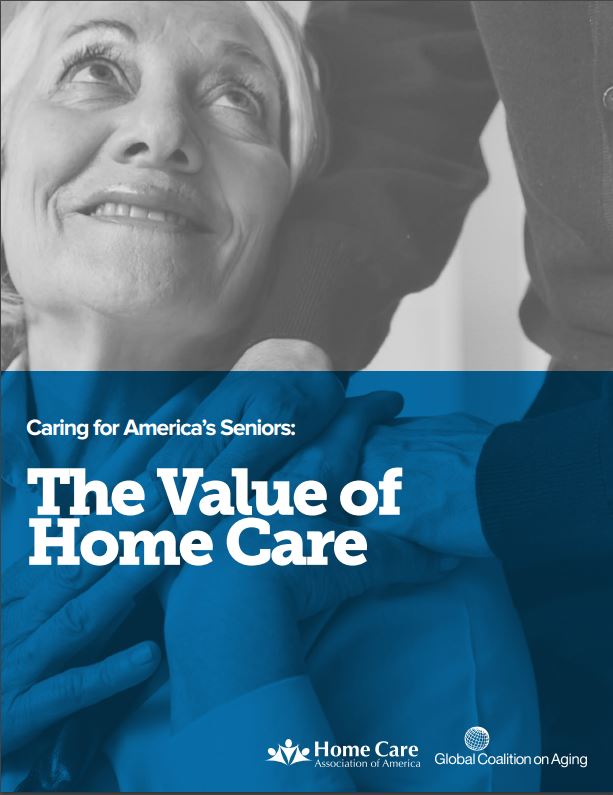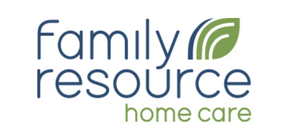“Caring for America’s Seniors: The Value of Home Care,” is a just published 16-page booklet from the Home Care Association of America (HCAOA). This comprehensive and easy-to-read document illustrates, in graphic detail, the key issues facing families, and this country, as we respond to the challenges of caring for America’s aging population. It offers practical responses and points out the vital part private pay home care plays in the health care continuum.
That the aging population is increasing quickly is well known. The importance of HCAOA’s booklet is that it collects in one place the results of many different studies conducted by a varied group of independent and governmental organizations including AARP, The National Alliance for Caregiving, the Centers for Medicare & Medicaid Services, and more. The booklet is available to read online, and it is a sobering read. In 2020, it is expected that the number of Americans 65 or older will be 56 million, with that number growing to 84 million by 2050. And, states the authors, “nearly 70 % of Americans who reach 65 will be unable to care for themselves at some point without assistance.”
One of the challenges HCAOA identifies is the impact on elders of the changing demographics of the American family. In the past families typically cared for older family members who needed assistance. But families are changing and the publication refers to this as “a shrinking base of support,” referring to the number of potential family caregivers per older adult. One study cited determined that the “ratio of potential family caregivers to those over 80 will decrease from 7:1 today to 4:1 by 2030, and to less than 3:1 by 2050.” At the same time that the population of possible family caregivers is shrinking, family members are also moving farther away from each other. In “America’s mobile society…, on average, adults aged 60+ with one or more adult children live more than 280 miles from their nearest child.”
Another issue highlighted is the inability of traditional government health care programs and institutions such as nursing homes and hospitals to meet the needs of the tens of millions of elderly Americans who, over the decades, will require some form of non-medical assistance. When family members can’t help, and the senior does not have multiple health challenges that require care in a residential facility, families have often turned to paid caregivers.
HCAOA also takes a look at the different ways families have found caregivers. In the past, the most common way to find a caregiver was through “direct hiring.” A family member would locate a caregiver through a personal referral, or by answering a “seeking work ad” in the local newspaper, or on a grocery or church bulletin board. When times were simpler and a greater number of elderly lived in small towns with family close by, this approach worked well. Today, hiring a stranger is a riskier proposition. Among the risks are the potential for elder abuse, identity theft, injuries that occur as a result of using caregivers with no training, and being stuck with no fallback if, one day, the caregiver does not show up . To provide a small amount of structure to this wild west approach to caregiving, some people turned to referral agencies called “registries.” A registry builds a list of caregivers and is paid a fee by the family for referring a caregiver. The problem with this model is similar to direct hiring, as there is no assurance that the caregiver is licensed, insured, and well trained. The caregiver will not receive professional supervision. Additionally, in both models the senior or a family member is the caregiver’s employer, responsible for taxes, worker’s compensation, and accepting liability should the caregiver be injured on the job. Direct hiring and registry services are still around but over the last 10 years, licensed home care agencies have become the much-preferred model.
Most of the booklet focuses on the benefits to clients and families who use a licensed home care agency, or “private pay home care.” This is the type of home care provided by Family Resource Home Care. Home care providers employ the caregivers who are screened, trained and supervised and receive continuing education. In addition to caregivers, the provider employs professionals with expertise in elder care who provide training and supervision, perform an in-home assessment, and write a care plan for caregivers to follow. Home care gives families security and peace of mind and the senior is able to age where they are most comfortable – at home.
Across the nation, home care is growing precisely because it is aligned with the personal values of a growing number of Americans, to age safely and comfortably at home. HCAOA has done the home care industry a huge favor by producing this document. If you or others are curious about private home care, you can download the free pdf, The Value of Home Care.






